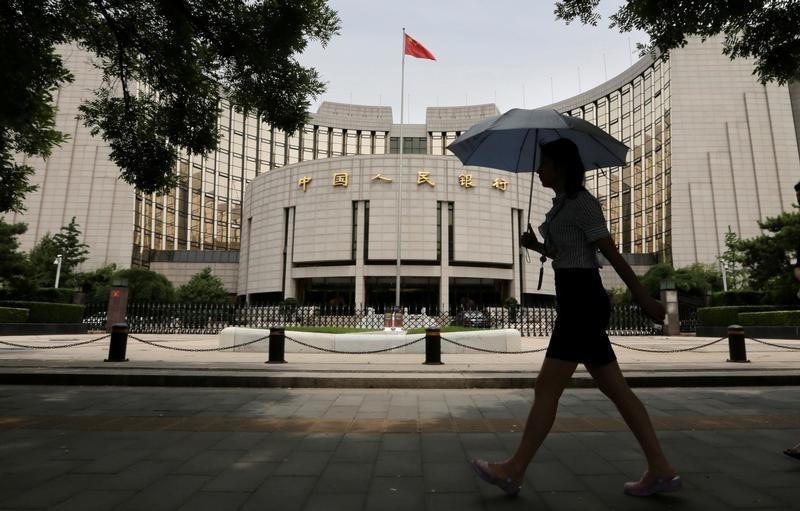U.S. stock futures slip lower; Cook’s firing increases Fed independence worries
Investing.com - The timing of a raft of new policy measures by the People’s Bank of China on Wednesday suggests that Beijing can be patient as it approaches upcoming trade negotiations with the U.S., according to analysts at BofA.
The PBOC announced it will reduce bank reserve requirements and inject more liquidity into the economy to help weather headwinds from ongoing trade tensions with the United States.
U.S. President Donald Trump has slapped tariffs of at least 145% on China, leading the country to respond with its own retaliatory levies of 125% on U.S. imports. The tit-for-tat moves have sparked concerns over a prolonged trade spat between the world’s two largest economies.
Meanwhile, the PBOC said it will cut the borrowing cost of its seven-day repurchase agreements by 10 basis points to 1.40%. The central bank will also slash its reserve requirement ratio (RRR) -– the amount of cash required to be held by banks as reserves -– by 50 basis points to 6.2%.
Both moves aim to release more monetary stimulus into the economy, with PBOC Governor Pan Gongsheng stating that the RRR cut will release 1 trillion yuan ($138 billion) in liquidity.
The rate cuts come amid some recent strength in the yuan, as it benefited from a weaker dollar and a series of mildly stronger midpoint fixes. A stronger yuan gives the PBOC more headroom to loosen policy, with the RRR cut being the PBOC’s first since September.
In a note to clients, the BofA analysts led by Anna Zhou argued that the timing of Beijing’s announcement of the new measures on Wednesday was "carefully chosen", noting in particular that it came prior to crucial trade talks between U.S. and Chinese officials in Switzerland this weekend.
"It came on the back of recent weakening of the U.S. dollar, which opened the door for interest rate cuts," the analysts wrote. "More importantly, the stimulus is delivered shortly before the upcoming negotiations with the U.S., which demonstrates China’s strategic patience."
Chinese officials will now likely turn their focus to fiscal stimulus, which will hinge on the outcome of the talks as well as incoming economic data, the analysts flagged.
While China’s economy improved in the first quarter of 2025, weak purchasing managers’ index prints for April showed the second quarter was likely to be hamstrung by the trade conflict.
